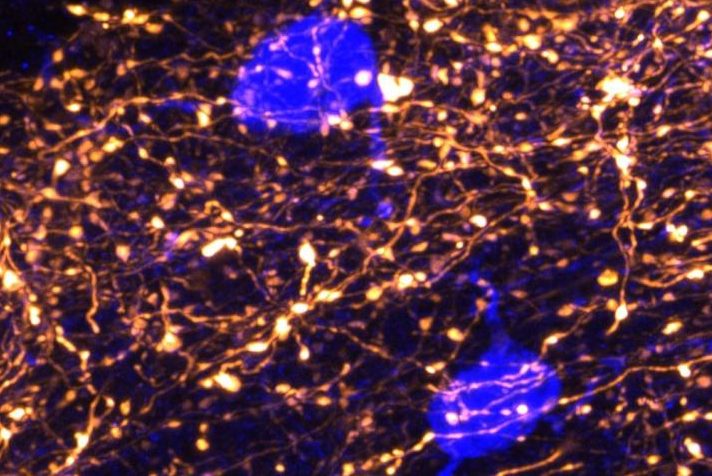The brain can only use sensory information meaningfully, to perceive and interact with the environment, when it is integrated with and compared with internally generated top-down signals; those that move from general to specific and are influenced by, and interpreted in the context of, our previous knowledge and experiences.
Little is known, noted the authors of a new study investigating this area of neuroscience, about the brain wide connections that convey such top-down signals, their information content, and learning-related plasticity. Now, the team of researchers from Germany, has identified a key source of this experience-dependent, top-down information. The group identified the higher-order thalamus as a major source of this input to mouse auditory cortex and investigated a circuit in cortical layer 1 that facilitates plastic changes and flexible responses.
The authors wrote that these results “demonstrate how top-down feedback information can reach cortical areas through a non-cortical structure that has received little attention despite its widespread connections with the cortex.”
This work is published in Science in the paper, “A thalamocortical top-down circuit for associative memory.”
The neocortex is the largest and most powerful area of the human brain. All of its important cognitive functions are made possible by the convergence of two distinct streams of information: a “bottom-up” stream, which represents signals from the environment, and a “top-down” stream, which transmits internally generated information about past experiences and current aims.
Despite the neocortex’s strong connection with the thalamus, the role of direct thalamocortical communication in memory remains elusive.
The question of how and where exactly this internally generated information is processed is still largely unexplored, said Johannes J. Letzkus, PhD, group leader at Max Planck Institute for Brain Research, in Frankfurt, Germany. This motivated him and his team to search for the sources of these top-down signals.
The scientists succeeded in identifying a region of the thalamus, a brain area embedded deep within the forebrain, as a key candidate region for such internal information.
Based on this, Maria Belén Pardi, PhD, a postdoctoral fellow in the Letzkus laboratory, developed a strategy to measure the responses of individual thalamic synapses in the neocortex of the mouse before and after a learning paradigm. The researchers performed “chronic in vivo two-photon calcium imaging of thalamic synapses in mouse auditory cortex layer 1, a major locus of cortical associations.”
“Whereas neutral stimuli without relevance were encoded by small and transient responses in this pathway, learning strongly boosted their activity and made the signals both faster and more sustained over time,” explained Pardi. “We were really convinced when we compared the strength of the acquired memory with the change in thalamic activity: This revealed a strong positive correlation, indicating that inputs from the thalamus prominently encode the learned behavioral relevance of stimuli,” said Letzkus.
In further experiments and computer modeling, which were conducted together with the team of Henning Sprekeler, PhD, principal investigator at the Technical University Berlin, the researchers discovered a previously unknown mechanism that can finely regulate this information and identified a specialized type of neuron in the outermost layer of the neocortex that dynamically controls the flow of these top-down signals.
Combined with optogenetics, viral tracing, whole-cell recording, and computational modeling, the scientists found that “the higher-order thalamus is required for associative learning and transmits memory-related information that closely correlates with acquired behavioral relevance.”
This confirms the scientists’ assumption that the thalamus’ projections to the sensory neocortex act as a key source of information about previous experiences associated with sensory stimuli. “Such top-down signals are disrupted in a number of brain disorders like autism and schizophrenia,” Letzkus explained. “Our hope is that the present results will also enable a deeper understanding of the maladaptive changes underlying these severe conditions.”



